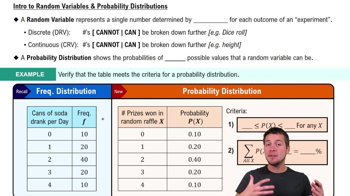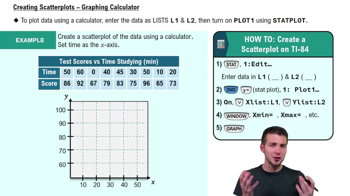Here are the essential concepts you must grasp in order to answer the question correctly.
Randomized Controlled Trial (RCT)
A Randomized Controlled Trial (RCT) is a type of experimental design where participants are randomly assigned to either a treatment group or a control group. This method helps eliminate bias and ensures that the groups are comparable, allowing researchers to assess the effect of the treatment accurately. RCTs are considered the gold standard in clinical research for evaluating the efficacy of interventions.
Recommended video:
Intro to Random Variables & Probability Distributions
Stratified Sampling
Stratified sampling is a technique used to ensure that specific subgroups within a population are adequately represented in a sample. In this experiment, participants are divided into equal age groups, which allows for a more controlled comparison of the drug's effects across different age ranges. This approach enhances the validity of the findings by accounting for age-related differences in ADHD symptoms and treatment responses.
Recommended video:
Sampling Distribution of Sample Proportion
Control Group
A control group is a baseline group in an experiment that does not receive the treatment being tested. Instead, it may receive a placebo or standard treatment, allowing researchers to compare outcomes between the treatment and control groups. This comparison is crucial for determining the effectiveness of the new drug, as it helps isolate the drug's effects from other variables that could influence the results.
Recommended video:
Creating Scatterplots - Graphing Calculator






